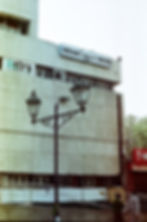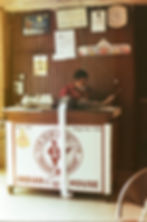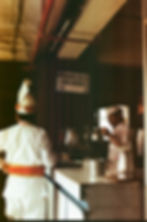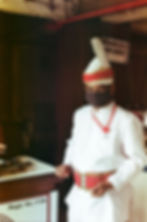Dissent, Debate, and CoffeeHouse Culture
- The Edict
- Jul 29, 2021
- 5 min read
By Amogha Sharma, UG'23
I was first introduced to the subject of this article a few months ago, through a chance conversation with a friend, the contents of which I now barely recollect. It wasn’t until a few months later that I found myself wondering more about the dominant café culture that exists across the smallest of towns in India today. Given that both coffee and cafes have now slithered their way into common life, it is an uncommon question, but not an unusual one. It was then that a part of the conversation I had with my friend struck me. There was a very old coffee house somewhere in Lucknow, known as the tea-table of renowned politicians since its inception.
For a drink that is consumed so widely by people, it is surprisingly rare to find someone exploring the origin of coffee or the great political power it possessed. Banned during the last leg of the Ottoman Empire, coffee houses initially came into being in Constantinople before surfacing all over Europe. Centuries before today, the seeds of revolution in France were sowed through the fiery debates surrounding liberty, equality, and fraternity in public coffee houses. Somewhere in the heart of Paris while India awakened to freedom, philosophers Simon de Beauvoir and Jean-Paul Sartre were discussing their ideas over coffee in the much-adored Parisian Café, Les Deux Magots. Predictably, coffee houses have been a regular haunt of writers and thinkers in the West.

My quest to revisit the coffee house culture of post-independence and pre-liberalized India led me to one of the first popular coffee houses established in India – the India Coffee House in Mumbai. The coffee house that had started off as a British initiative in the 1930s ended up facing a severe crisis due to the losses suffered by the young Indian government. However, in 1957, it found itself restructured and up and running again following the intervention of communist leader, A.K. Gopalan. Two major alterations had been made; the coffee house had been renamed the ‘Indian Coffee House’ and it was now owned and operated by a workers’ cooperative. A decade after India adopted its Constitution, the Indian Coffee House had a well-organized chain with branches in numerous cities all over India. The culture that developed around coffee houses from that point in time relied heavily on the common people of the young new nation, who gathered together to discuss and deliberate, stretching beyond the political and personal.

“Ram Manohar Lohia used to come here,” he repeated himself as we picked up from where we had left off, “There is not much to see you know, there is a huge Amul cart right in the middle of the coffee house”. My friend was clearly charmed by Lohia and thoroughly unimpressed by the aesthetics of the place. “I have heard there is one in Allahabad as well,” I said.

The Indian Coffee House’s acquired association with politics was not restricted to the political debates that took place among the customers over a cup of steaming filter coffee and crispy South Indian snacks. Many of these outlets were regularly visited by towering leaders from all shades: the left, right, and center. Perhaps, the best-known Indian Coffee House is the one in College Street, Kolkata. With a clientele that included the likes of Satyajit Ray and Amartya Sen, it perfectly encapsulates the rich social and cultural history associated with the city. On prodding a few residents of Kolkata, I learned that the Indian Coffee House has been the hangout of the best minds in the fields of music, film, literature, and academia. To quote one of them, “The food may not be the best, but the food for thought is priceless.”

Having extensively heard and read about the Coffee House chain, on a fateful Sunday morning, I decided it was finally time for me to try and dig up some first-hand information. Wildly curious, I ran a quick search on the history of the Delhi branch. It has been alleged that the coffee house was shut down during the Emergency on the grounds that people had gathered there to plot against the regime. While I still cannot confirm (or contest) this assertion, I can confidently claim that Connaught Place’s quaint little Indian Coffee House catered to Indira Gandhi’s Cabinet meetings when she was living in 1, Safdarjung Road.
It is Mr. Gopal Singh who shared this bit of information with me, offering a sneak-peak into the heydays of the Indian Coffee House. Incidentally, he joined it at the onset of the liberalisation of the Indian economy, and his knowledge about the period prior to that had come from his old colleagues. It was 10 in the morning; the coffee house was open from 9 AM to 9 PM. I looked around as he recommended the specialties of the place— mutton dosa, mutton cutlet, and filter coffee—and observed that there were only one or two tables empty.

Over the years, Connaught Place has witnessed the rise and fall of several governments and parties in the nearby Lutyens’. However, the Indian Coffee House has felt it more closely than the rest. In 2012, the Aam Aadmi Party was formed by Arvind Kejriwal following the 'India Against Corruption ' Movement. Mr. Singh recalled the several meetings that took place in the coffee house during that period.

As the city embraced the changes that flooded the 90s, the Indian Coffee House had also been carved out as a space for young university students engaging in politics. Old customers still remained loyal, many of whom are regulars at specific tables to this day.

Back home, I dialled my friend again. “Would this coffeehouse come to your mind if you had to meet a friend, maybe me, somewhere?” I asked. He shook his head. The old has paved the way for the new; there are now one-too-many themed cafes with Wi-Fi services in Lucknow for new consumers to choose from.
When I was still exploring Kolkata, I had been familiarised with a famous song composed for the historic coffee nest. I like to believe that for now, it is these little anecdotes and Manna Dey’s ‘coffee house shei adda ta’ that continue to sustain the nostalgia held by the glorious past of our old coffee houses.
Note: This article owes its existence to several conversations spanning weeks. I would like to thank each and everyone who shared their experiences with me. Among others, I’d like to appreciate Avanindra Yadav for introducing me to the Indian Coffee House, Souti Mukhopadhyay and Sanjana Banka for taking me on a virtual tour of the College Street Coffee House, and most importantly Mr. Gopal Singh, who took out time to talk to me about his experience working with the Indian Coffee House in Connaught Place.



